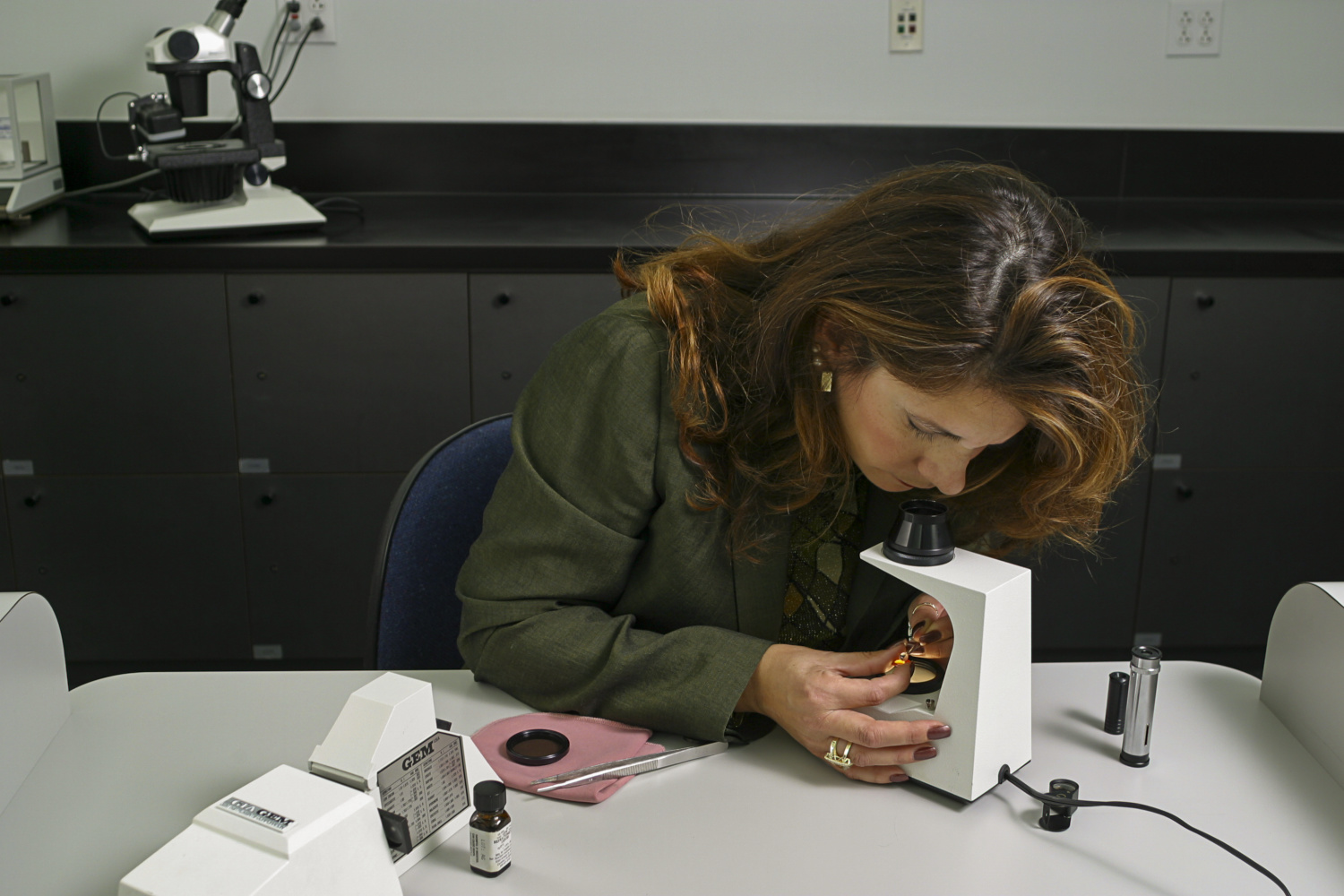To succeed in this course, you should set up the proper environment and make sure you have the equipment you need for gem testing. The first thing you need is a suitable workspace. Choose a quiet area in your home or office that’s private and free of distractions. Choose a comfortable chair and desk that let you maintain correct posture and reduce fatigue while you identify gems. If possible, work in a room with solid flooring or low-pile carpet. A dropped stone can get hopelessly lost in thick carpet.
When you test gems, try to work in a darkened room—preferably where the only light comes from the gem-testing equipment and a desk lamp. Normal ceiling lights can produce confusing reflections and make it hard for you to see inclusions. The light might also interfere with the instruments.
It helps to maintain a regular schedule. Try to work at a time of day when you feel rested and when you can work uninterrupted. Try to make sure you have enough time to do your identifications without feeling pressured to hurry.
Treat the practice stones GIA sends you with care. Some of them are costly and difficult to replace. GIA regularly cleans the stones in the practice sets. The most you have to do is wipe them with a lint-free cloth. Never use steam, acid, ultrasonic, or other devices on GIA stones. To avoid mix-ups, work on only one practice stone at a time. The best way to ensure this is to have only one stone out of its bag at any one time.
Always consider the safety of your stones, not only while you’re taking this course, but throughout your career. A slip of the fingers or tweezers might send a stone flying across the room. And don’t exert too much pressure on a stone with your tweezers. You might damage the girdle or facet edges of gems like peridot and tanzanite if you squeeze too hard.
Everyone—no matter how careful—occasionally drops a stone. A flipped stone can travel a long way before you recover it. A tidy work environment makes it much easier to find a lost stone. You can increase your chances of recovering a dropped stone by keeping your work area clean and uncluttered, with the wastebasket covered and desk drawers closed.
If you lose track of a stone, don’t move anything from the area without thoroughly checking it. Stones can easily fall into pockets, pants cuffs, or folds in clothing, or become embedded in the soles of shoes. Also check the baseboard edges around the room. Get down on your hands and knees, turn off the lights in the room, and use a flashlight to look for facet reflections. If this fails, you might consider using a hand-held vacuum cleaner to suction the carpet. You can then recover any lost stones from the vacuum cleaner’s dust bag.






